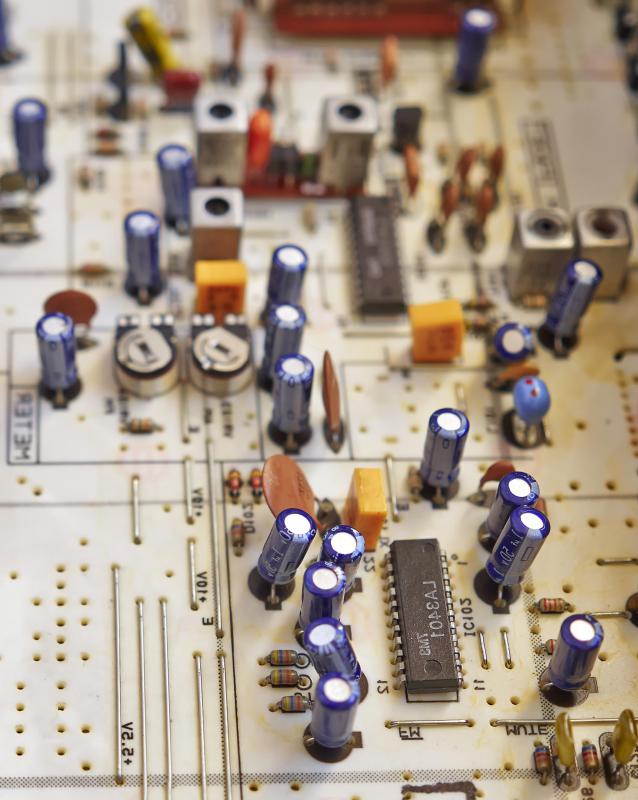At WiseGEEK, we're committed to delivering accurate, trustworthy information. Our expert-authored content is rigorously fact-checked and sourced from credible authorities. Discover how we uphold the highest standards in providing you with reliable knowledge.
What is a Wirewound Resistor?
A wirewound resistor is an electronic component that provides a predetermined amount of resistance to electrical flow in a circuit. A wirewound resistor’s construction is typically a specific length of a resistive metal wire that is wound around a form of some type. The ability to control the exact amount of resistive wire used in the device during the manufacturing process allows it to be made with a very precise amount of resistance. The wirewound resistor finds common use not only as a precision resistor, but also in applications that require the component to be able to withstand and function properly in high-temperature environments.
A common resister is usually constructed of a carbon film or composite material that provides resistance to an electrical voltage within a given range, referred to as the device’s tolerance. While a common resistor can have a tolerance from five to 20 percent of its rated value, a wirewound resistor is a much more accurate device. Using a resistive metal wire made of a nickel and chrome alloy called nichrome, the tolerance range of a typical wirewound resister is usually one percent or less of its rated value. For special applications, it can be manufactured with tolerances as low as 1/100 of one percent.

The manufacture of a typical wirewound resistor involves the winding of resistive wire around a form commonly made of a ceramic, fiberglass or plastic that is usually in the shape of a tube or solid cylinder. A metal cap, with a metallic lead attached to solder the finished device onto a circuit board, is then placed over each end of the wirewound form and each end of the resistive wire is soldered to one of the caps. The body of the device is then coated with a non-conductive paint, enamel or plastic.
Wirewound resistors are useful in high-temperature applications because their functioning components are made entirely of metal. In this case, the resistors’ wires are welded to the end caps or metal rings that serve the same purpose. The devices are then covered with a temperature-resistant non-conductive material and encased in aluminum or ceramic bodies.
As the resistive wire in wirewound resistors are in the shape of coils around their forms, they can create a phenomenon called inductance, which is the generation of an electromagnetic field that resists voltage. While these fields do not affect the wirewound resistors themselves, they can interfere with other devices in an electrical circuit. To counter the inductive effect, special low-noise wirewound resisters are manufactured. These resistors either have the resistive wire wound in multiple directions, in special patterns or around flat forms, greatly lessening the electromagnetic fields the devices are capable of creating.
AS FEATURED ON:
AS FEATURED ON:











Discuss this Article
Post your comments